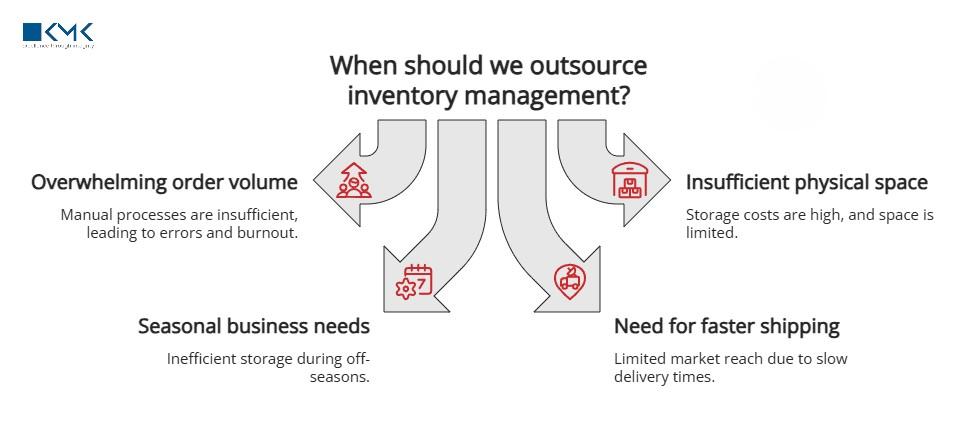Inventory Tracking: An In-Depth Guide to Streamlined Stock Management

Inventory tracking is a cornerstone of operational efficiency for businesses that deal with physical products. From small retail stores to large manufacturing facilities, keeping a precise record of stock levels, movements, and locations ensures that operations run smoothly. Effective inventory tracking not only reduces the risk of stockouts and overstocking but also provides crucial insights into demand patterns, supply chain performance, and financial accuracy.
At its core, inventory tracking is the process of monitoring goods as they move through the supply chain. This includes receiving products from suppliers, storing them in warehouses or retail locations, moving them to production lines, and ultimately delivering them to customers. Each step requires careful record-keeping and verification to maintain accurate inventory levels. Historically, inventory tracking was a manual process, involving spreadsheets, paper logs, and periodic physical counts. While these methods could work for small businesses, they often led to errors, inefficiencies, and lost revenue in larger operations.
Modern inventory tracking leverages technology to automate and optimize the management of stock. Barcodes, RFID tags, and QR codes have become standard tools, enabling real-time updates as items are scanned during shipping, receiving, and movement. These technologies allow businesses to instantly know the quantity of each product in stock, its exact location, and its movement history. Such precision is particularly valuable for companies managing thousands of SKUs across multiple locations.
Integration with software solutions enhances inventory tracking by linking stock data with other business functions. Enterprise Resource Planning (ERP) systems, warehouse management software, and point-of-sale systems can share inventory information across departments. This integration ensures that sales teams, procurement managers, and production planners all have access to consistent and up-to-date data. The ability to predict trends and plan replenishments accurately reduces waste, improves cash flow, and enhances customer satisfaction.
Inventory tracking also plays a significant role in compliance and reporting. Businesses operating in regulated industries—such as food, pharmaceuticals, and electronics—must maintain precise records of their stock to meet legal standards. Traceability from supplier to customer helps prevent errors, ensures product safety, and provides documentation for audits. Without effective tracking, companies risk non-compliance penalties, recalls, and reputational damage.
Different strategies exist for inventory tracking depending on business needs. Periodic tracking involves checking stock at set intervals, typically through physical counts, while continuous tracking updates inventory in real-time whenever items are moved or sold. Businesses may also use a combination of these methods, tailoring them to seasonal demand or supply chain complexity.
Warehouse organization is closely linked to inventory tracking. Clearly labeled shelves, designated storage zones, and organized layouts make it easier to locate items quickly and maintain accurate counts. Regular audits and cycle counts complement technology, ensuring that data in systems matches the physical inventory. A discrepancy between recorded and actual stock can highlight issues such as theft, misplacement, or damage, prompting corrective actions.
For businesses with multiple locations, inventory tracking becomes more complex but equally essential. Centralized systems allow for consolidated visibility, enabling managers to transfer stock efficiently between locations based on demand. This approach minimizes carrying costs while ensuring that products are available where they are needed most. Businesses can also analyze performance across locations, identifying trends and opportunities for optimization.
Inventory tracking is not limited to physical goods alone. Businesses that deal with raw materials, work-in-progress items, or consumables benefit from detailed tracking to monitor usage, prevent shortages, and maintain production schedules. Accurate records also support budgeting, forecasting, and cost management, providing a comprehensive view of operational health.
Emerging technologies continue to reshape inventory tracking. IoT-enabled devices, smart sensors, and advanced analytics allow for predictive insights and proactive management. Artificial intelligence can forecast demand fluctuations, detect anomalies in stock levels, and suggest optimal replenishment strategies. While technology enhances efficiency, it is the combination of systems, processes, and skilled personnel that ensures effective inventory management.
The adoption of inventory tracking practices influences customer experience directly. Timely availability of products, accurate order fulfillment, and quick response to stock changes foster trust and loyalty. Businesses that maintain clear visibility into their inventory can communicate effectively with suppliers and customers, reducing delays and improving service quality.
In addition, accurate inventory tracking supports strategic decision-making. Management can identify slow-moving items, seasonal trends, and high-demand products. Data-driven decisions regarding purchasing, pricing, and promotions are informed by real-time inventory insights, aligning operations with market demand. Businesses can also assess supplier performance, lead times, and delivery reliability, ensuring that supply chain partners meet operational requirements.
Inventory tracking systems must also address security and risk management. Losses due to theft, spoilage, or misplacement can be minimized through proper documentation and monitoring. By implementing access controls, audit trails, and accountability measures, companies safeguard their stock while maintaining transparency for management and regulatory purposes.
Training staff is an integral part of inventory tracking success. Employees responsible for receiving, storing, or moving goods must understand procedures, use tracking tools correctly, and report discrepancies promptly. Continuous education ensures that systems operate efficiently and that the organization maintains accurate and actionable data.
Inventory tracking is an evolving discipline. Businesses that invest in robust tracking methods, technology integration, and process optimization gain a competitive edge. They can reduce operational costs, enhance supply chain efficiency, and provide reliable service to customers. By maintaining an ongoing focus on accuracy, visibility, and adaptability, companies ensure that their inventory supports growth and profitability.
Final Thoughts
Inventory tracking is more than a routine task—it is a strategic function that drives operational efficiency and informed decision-making. Businesses that adopt precise tracking practices and integrate them with technology gain a holistic view of their stock, streamline processes, and maintain a competitive advantage. Consistent monitoring, accurate data, and proactive management transform inventory from a logistical concern into a powerful driver of performance and customer satisfaction.





